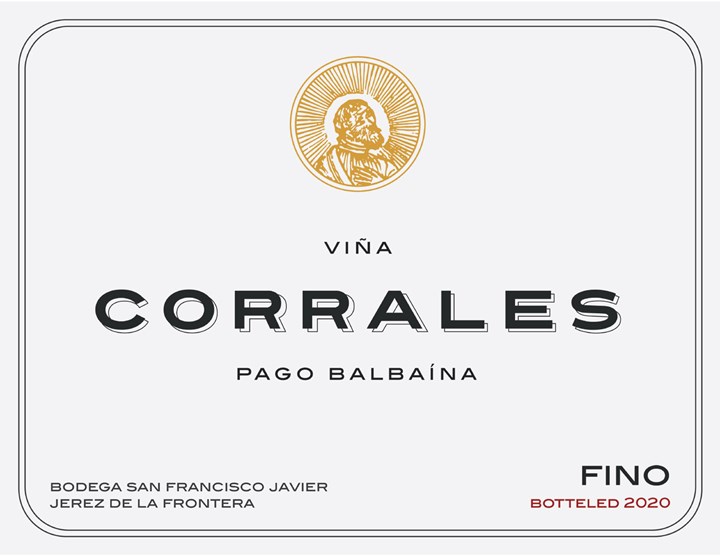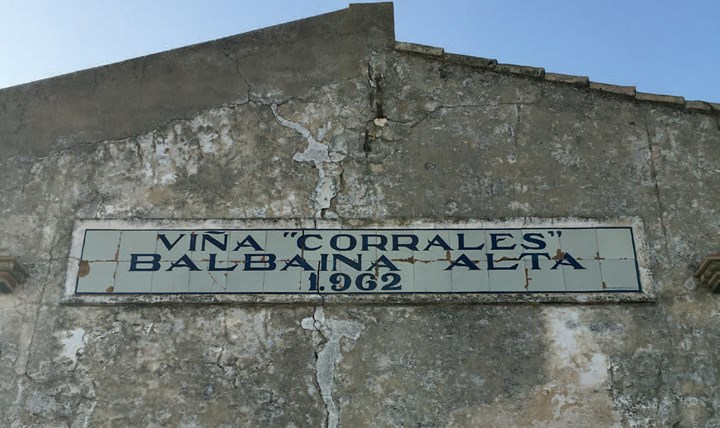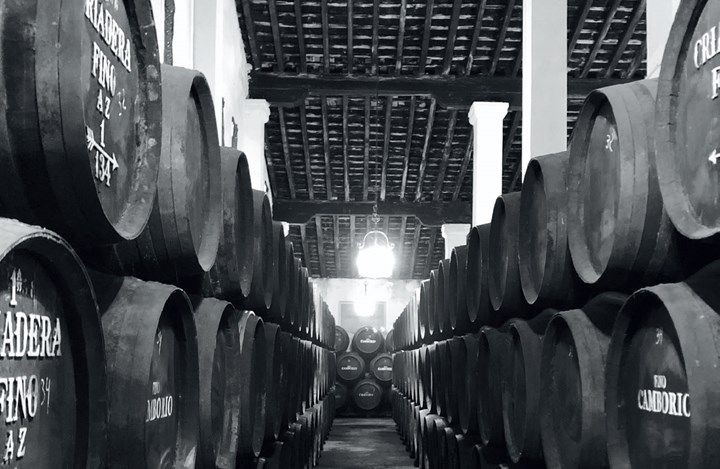
Which site would you like to visit?
By clicking the retail or wholesale site button and/or using rarewineco.com you are choosing to accept our use of cookies to provide you the best possible web experience.

“I was floored by the complexity and elegance of this wine ... the finesse of Balbaína … the incredible lightness of Fino! ”
- Luis Gutiérrez
While other Spanish wines have achieved international recognition, Peter Sisseck’s Pingus is one of the very few that has joined the ranks of the world’s most coveted wines. Like Coche-Dury’s Corton-Charlemagne, Guigal’s LaLa wines, or Giacomo Conterno’s Monfortino, Pingus is known and revered wherever great wine is discussed.
So profound is Pingus’ harmony of richness and elegance and, above all, its utterly singular character, that it has prompted wishes among its ardent following for a white counterpart. As Peter has stated, “many people had asked me to produce a white brother/sister to Pingus.”
In fact, Peter had dreamed of making what he considers Spain’s greatest white wine, Fino, ever since his first visit to Jerez in 1993. Now, with the release of his Bodegas San Francisco Javier Viña Corrales Pago Balbaína Fino, Peter’s dream has been realized.
Like that first vintage of Pingus in 1995, Viña Corrales is a revelation. It’s a Fino whose richness and luxurious texture are matched by its vibrancy, complexity and elegance. Courtesy of Peter’s extraordinary ability to capture the utmost from his vines, Viña Corrales is not only brilliant, but unique: a terroir-driven Fino from one of Jerez’ iconic vineyards that is, first and foremost, a great white wine.
When Peter arrived in Spain in 1993 to manage a new project, Hacienda Monasterio, he was struck by two things. The first was all ancient vines that dotted the Ribera del Duero landscape where he was planting and developing Monasterio. The second was the complexity and elegance of the great Finos he tasted in Jerez.
Peter quickly exploited the old Ribera del Duero vines, creating Pingus in 1995. But the idea of producing a great white wine in Jerez haunted him. He saw that Fino could be far more than the ocean of light, young wines made to meet the demands of Spain’s Tapas bars. And, it surprised him on no one was making vineyard-designated Finos that reflected the greatness of their terroirs.
With time, Peter became determined to create such a wine. But it would first require both a solera and the vines from which to make the new wine to refresh it. And with all of his time and resources focused on Pingus, and Jerez far away to the south, such an undertaking wasn’t yet feasible.

It wasn’t until 2017 that the elements finally fell into place. First, of course, was the terroir. In Jerez, the specific vineyards—analogous to France’s lieux-dits—lie within larger areas called Pagos. The nobility of the greatest Pagos has been known for centuries, among them Macharnudo, Carrascal and Balbaína.
Yet, only rarely have these names appeared on a label; Valdespino’s Fino Inocente citing Macharnudo as its source is a notable example. As for designations of specific vineyards within Pagos, until now there have been none.
But Peter’s intent was to make exactly that, a vineyard-designated Fino. And so he went to a Pago historically famous for its Finos, Balbaína. Here he purchased eight hectares in Viña Corrales, whose distinct features make it an ideal choice for such a wine.
Viña Corrales is located at the highest point of Balbaína Alta, halfway between Jerez and the coastal town of El Puerto de Santa Maria. At 92 meters, and overlooking the Mediterranean, it is continually exposed to cooling breezes. And its tosca de barajuela soil, a laminated form of the region’s famed albariza chalk, is prized as a source of delicate, mineral wines, ideal for Fino.
Not only is Viña Corrales one of the greatest classic Fino vineyards, Peter’s vines average more than thirty years of age, unusually old for the region and producing concentrated fruit deeply expressive of its terroir. As at Pingus, Peter immediately eliminated the use of chemical fertilizers, herbicides, and pesticides, and started the long process of biodynamic conversion.

That same year, Sisseck acquired the cellar and solera founded in the 1960s by Don Angle Zamorano, an amalcanista (wholesaler) who sold wine to the big Sherry houses for their blends. As Peter notes, the solera was ideal for what he wanted to do, as it had been refreshed “using young wine from Pago Balbaína.”
With 74 barrels in the solera, and 244 barrels of Viña Corrales wine in the criadera that replenishes the solera, the first bottlings are already showing the character of its special vineyard.
The Wine Advocate’s Luis Gutiérrez tasted the first bottling of Viña Corrales and described it as “concentrated and full of energy, but at the same time, it feels light and easy to drink. The average age of the wine is eight to nine years, and such wines can sometimes feel heavy: you rarely want to drink more than one glass. Not here. 96 rating.”
In keeping with Peter’s innovative vision, Viña Corrales’ presentation is a departure as well. It’s bottled in a slope-shouldered Burgundy bottle, rather than the traditional Sherry shape, under a Diam cork branded with the year of bottling and the label simply reads Viña Corrales, Pago Balbaína, Fino bottled 2020.
This is all in keeping with Peter’s idea of the wine not as a simple aperitif, but as a great white wine, expressive of its terroir and capable of greater development with age. As with Pingus, this is a unique, groundbreaking wine, unlike any other of its region.
New discoveries, rare bottles of extraordinary provenance, limited time offers delivered to your inbox weekly. Be the first to know.
Please Wait
Adding to Cart.
...Loading...


By clicking the retail or wholesale site button and/or using rarewineco.com you are choosing to accept our use of cookies to provide you the best possible web experience.

